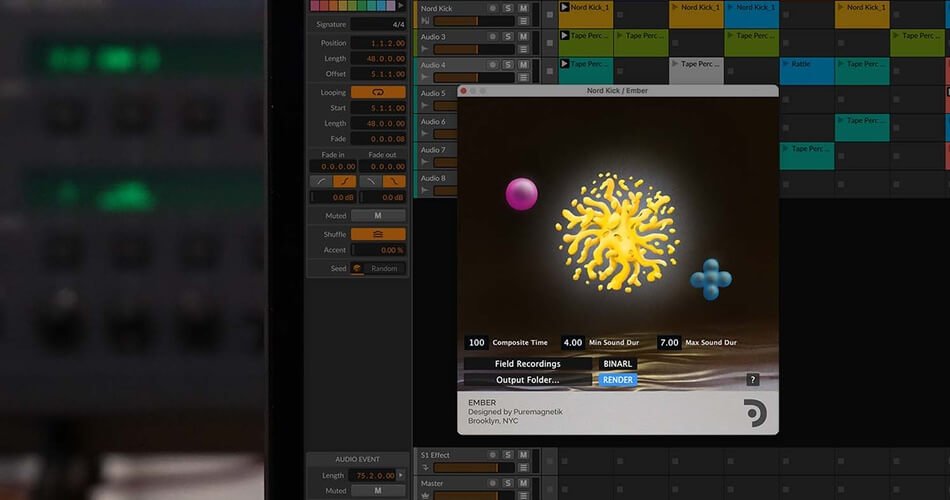Puremagnetik has just released a sophisticated microsound collage tool that employs granular resynthesis to configure complex sound composites, also in spatial (binaural) sound.
Inspired by musique concrète pioneers of the past several decades, Ember harnesses modern, digital algorithms with classic splicing techniques to create dense and evolving soundscapes. Users can point it to a folder of sounds and Ember will generate a composite of granular textures that can later be used in electronic composition processes.
Process
Ember employs granular resynthesis in the powerful Csound sound programming language to explore a collage of sounds on the particle level. Select a folder containing more than one sound and an output folder. Hit “Render” and Ember pulls a number of sounds from the folder and selects a playback slice from each one. It then creates granular composites of all sounds together with various time stretching, density and spatial algorithms.
Spatial Sound
Ember includes an HRTF transfer function option (activated with a switch) that auto generates binaural panning during the collage generation process. Users can activate this option and use headphones for some very interesting spatial effects.
Puremagnetik owner and lead developer Micah Frank says of Ember:
“It’s the foundation for an experimental sound workstation that I’ve been envisioning for a while. We can expect some regular updates here including – I hope – spectral tools, ambisonics support and more. Of course it will also all stay open source on my repo.”
Ember is open source and available on Github under (CC BY-NC 4.0). Using the open source Csound code, the plugin can be built in Cabbage for free.
The official Puremagnetik distribution is available as part of Puremagnetik’s Lore subscription for $9 USD/month.
More information: Puremagnetik



